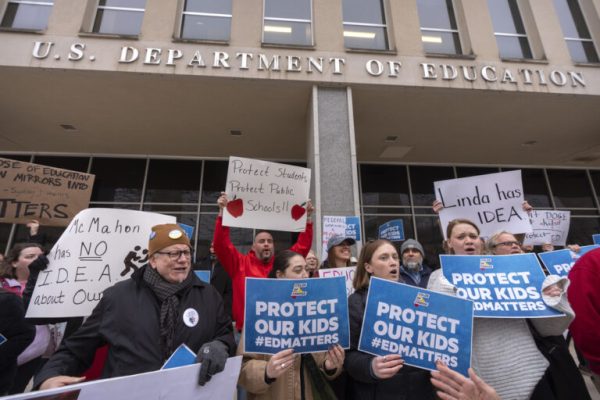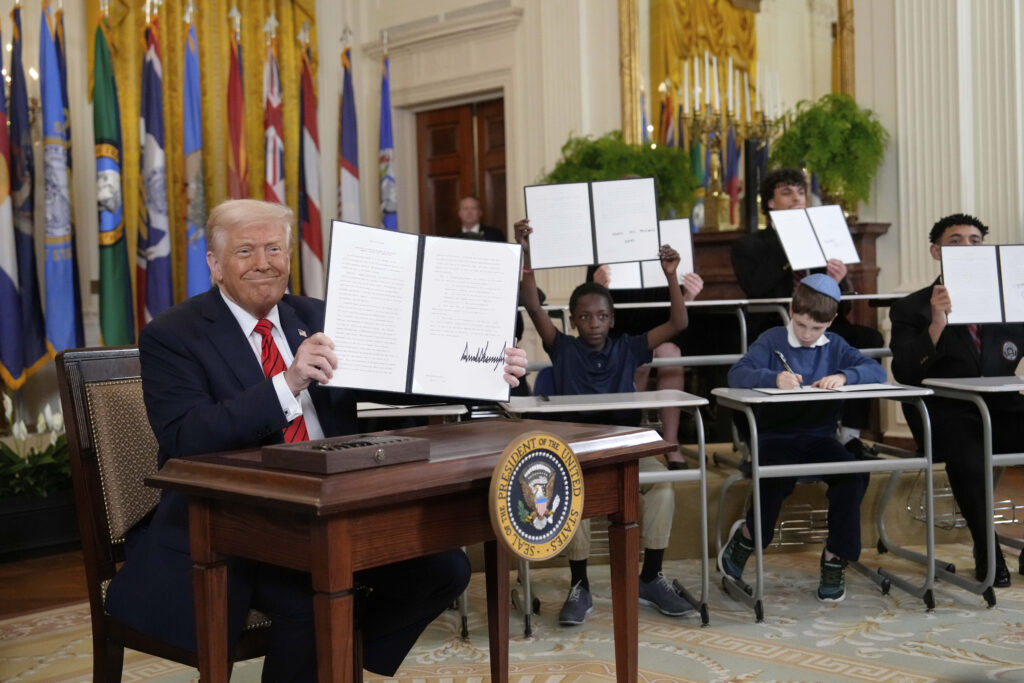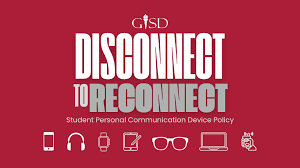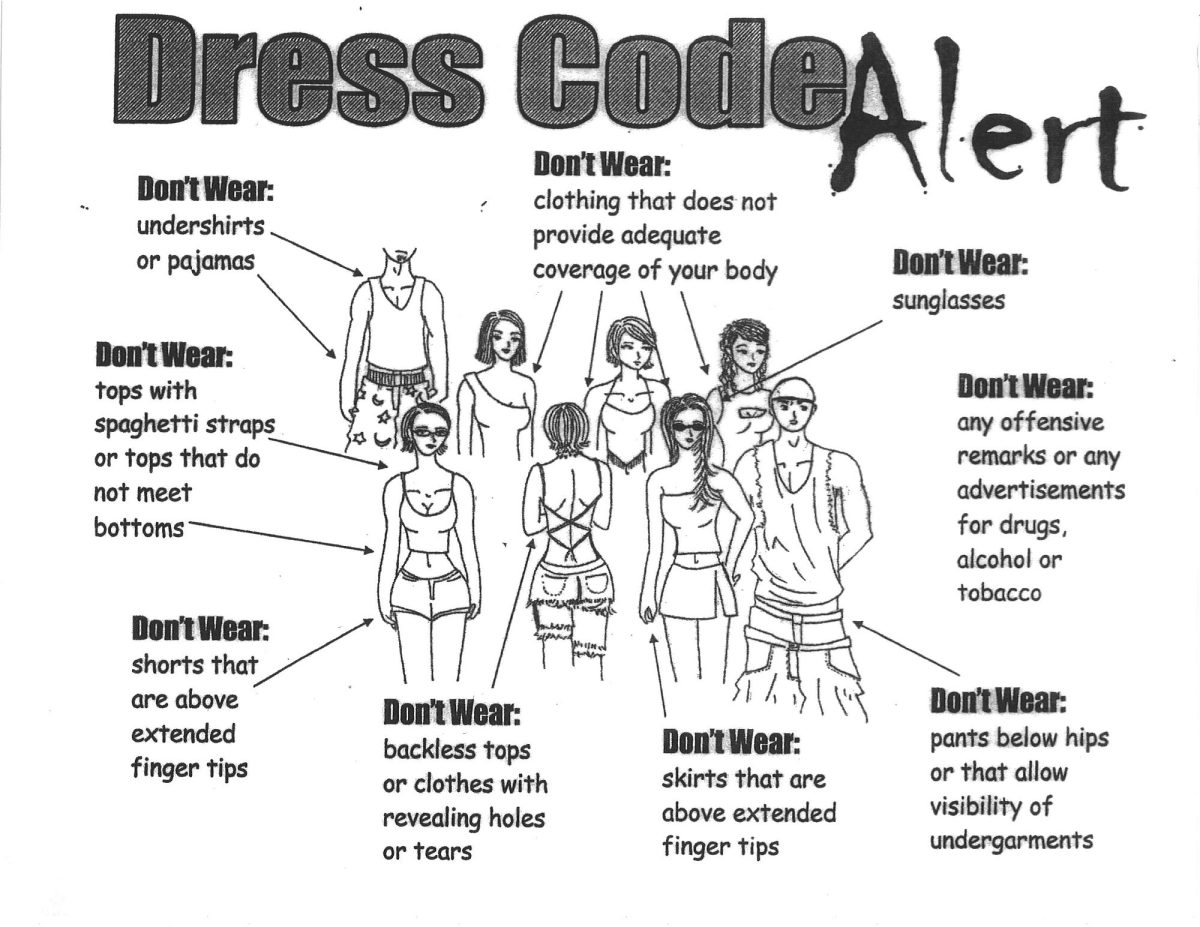“It’s doing us no good,” Donald Trump said before signing the executive order calling for the dismantling of the U.S. Department of Education. With Republicans and Democrats at war over whether education should be in the hands of the states or congress, many disregard the outlook of our educators–the real pawns on the playing board. Even with all the debate, the question still stands—what was Trump trying to accomplish with the removal?
“I am confused about that as well,” English teacher Dr. Erik Goen said. “I think he said something about saving money, which is odd because not that much money really gets put into education, especially when you compare it to military spending.”
History teacher Matthew Steinfels answers with a quick rebuttal.
¨What I think he was trying to accomplish, get rid of a department that serves 0 interest of children in the United States, has been completely misused as a political weapon, and is a complete waste of money and time for the past 50 years,¨ Steinfels said.
Coming in with a lighter explanation, social studies teacher Megan Williams speaks in her perspective.
¨I think President Trump was trying to accomplish less bureaucracy. Republicans usually like smaller government and so I think this was because he didn’t see the states having so much power over education, he didn’t see the federal side as being worth it,” Williams said.
The White House argues that the removal is beneficial to the states, raising more debate between the two perspectives.
“The states already have the power,” Goen said.“The amount of money we got from the government for education is actually very minimal compared to the state does like 90% of the stuff and you know our property taxes, especially in Texas, our property taxes are what funds schools and so you know actually it’s the people here–we are funding our own public schools that’s why there are schools that are in poor neighborhoods have less access to things as opposed to places like in Highland Park where they have very high property taxes and they have access to everything.”
With a clearly opposing view, Steinfels contributes his thoughts.
“It makes it now to where you no longer have to abide by national guidelines for things outside of education,” Steinfels said. “What this does is it reallocates funds that would have been going to things that don’t actually positively impact students and now makes it to where the states can do things to help their students.”
Restating her previous statement, Williams evens out the playing field once again.
“Well, given we have a Republican administration,” Williams said. “Republican Congress again they love small government and they love power with the states, and so that means that each individual state, they already have the power to create a curriculum now they’ll have even more power to.”
With Trump’s boastful announcement of his plan for the removal, many in the school setting wonder how he must view young students and administration in the U.S.
“Oh, I think he respects younger people,” Steinfels said. “Young people came out in record numbers for Donald Trump and so as did other minority groups, but younger people in general are much more supportive of him than any other Republican president in the past. I run a meritocratic classroom. Whenever everybody comes in, they’re the same. That’s the way that younger people respect that—they don’t want to be pandered to, and Donald Trump has never pandered to anyone.”
Goen sings a sympathetic outlook for our students.
“I don’t know if he actually has an opinion about them that he actually cares per se,” Goen said. “I think he’s driven by money and power, and I don’t think he really cares what happens to the people that are out here that are suffering from this–because if he did, we would not be in the situations that we’re in, and I think they would be a little bit more, caring and compassionate and empathetic I wish that we had the ability to talk about these things without fear of repercussions because it’s something that should be discussed and it should not be, fearful that we should be afraid to have our First Amendment rights revoked and not be speaking about these things.”
“I think they have a misconception–that in public education, our goals are to indoctrinate students with interesting ideologies and what they forget is as a teacher we are held to ethical and moral standards,” Willaims said. “Now, if I could indoctrinate students, I would indoctrinate them to turn their homework in and to show up to class and things like that.”

After all the debate, you’d think we would understand who’d be most affected by the removal of the Department of Education, but speculation still stands–who is the most affected by the removal?
“Probably the students, students and underprivileged people,” Goen said. “Families and whatnot that don’t have the wherewithal or the ability or the, access to, money and things like that, and kids wanting to go to college, it’s affected a lot of people, immigrants, people of color.”
Steinfels flips the switch with his perspective.
“Who I think is most affected by it, the people that shouldn’t have a job,” Steinfels said. “The people that have been taking advantage of it just like a lot of other government employees that have been taking advantage of the fact that they’re getting a paycheck for doing absolutely nothing.”
Riding on the same boat as Steinfels, Willaims shares her similar view.
“The people who work for [the Department of Education] and the companies who have massive contracts with the department, they’re going to lose that funding when they go to states instead,” Williams said.




